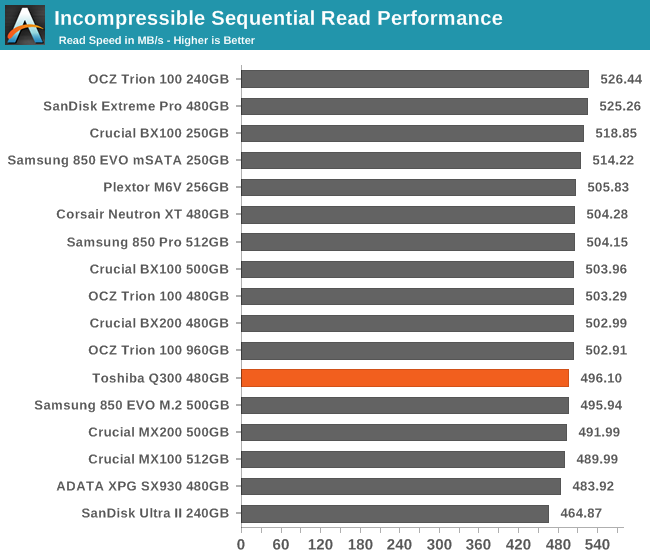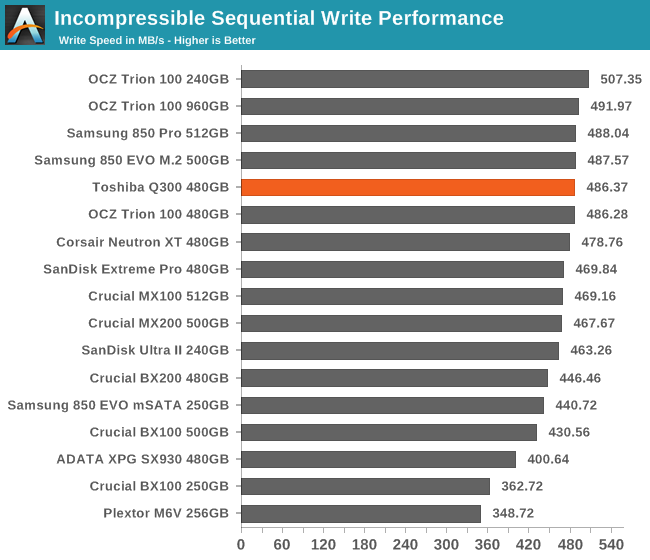The Toshiba Q300 SSD Review: Toshiba Becomes a Retail Brand
by Billy Tallis on February 26, 2016 8:00 AM ESTATTO: Transfer Size vs. Performance
ATTO is a quick, easy and free tool to we use to test read and write speeds across a range of transfer sizes. This test is relatively short so it illustrates near-peak performance for a queue depth of 4.
The scaling of performance as transfer size increases looks normal, hitting a ceiling at 64kB and larger transfers, and with write throughput consistently a little bit slower than reading.
AS-SSD
AS-SSD is another quick and free benchmark tool. It uses incompressible data for all of its tests, making it an easy way to keep an eye on which drives are relying on transparent data compression.


For the short duration of these tests, the Q300 delivers peak performance that doesn't stand out from the crowd, which is a good thing when most drives are bottlenecked by the SATA link speed.











30 Comments
View All Comments
bill.rookard - Friday, February 26, 2016 - link
MX100's are awesome drives, I have a pair in my webserver with a M4 for the boot drive. Sadly, the whole issue appears to be (with the exception of Samsungs drives) the TLC. When having to account for the 8 different voltage states required for 3 bit per cell it seems that the controllers are not up to the task of getting things done quickly.I'm thinking widespread adoption of V-nand (regardless of manufacturer) along with MLC in a larger lithography will wind up being the perfect storm of capacity, price, speed and endurance.
Arnulf - Friday, February 26, 2016 - link
TLC cells have 8 distinct voltage levels per cell to make up for 3 bits of information, not 3.hojnikb - Friday, February 26, 2016 - link
thats what he said.kmmatney - Friday, February 26, 2016 - link
No, he said 3, not 3vladx - Friday, February 26, 2016 - link
"No, he said 3, not 3"Huh?
boozed - Friday, February 26, 2016 - link
It's really quite simple. He said 3, not 3.extide - Friday, February 26, 2016 - link
I think what we will see is 3D TLC in pretty much all mainstream stuff, and 3D MLC in the high performance stuff.Samus - Friday, February 26, 2016 - link
It's too bad the MX100 and BX100 are harder and harder to find, when the MX200 and ESPECIALLY the BX200 are inferior.leexgx - Friday, February 26, 2016 - link
the BX100 its perfect for laptops as its super power efficient, the MX100/BX100 is the most use the most power SSD (the Adata Sp550 also uses the BX200 controller)leexgx - Friday, February 26, 2016 - link
ops!! MX200/B200 or any SSD that uses TLC with SLC cache seem to be extremely high power usage, for minimal overall speed boost (and higher chance of data loss due to SLC/TLC data movement)